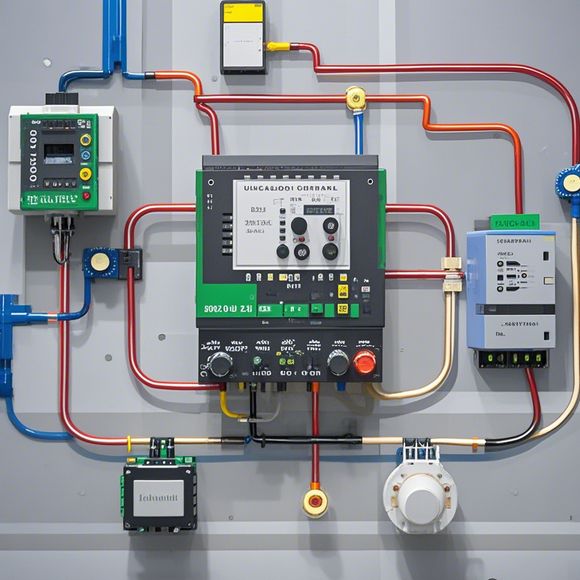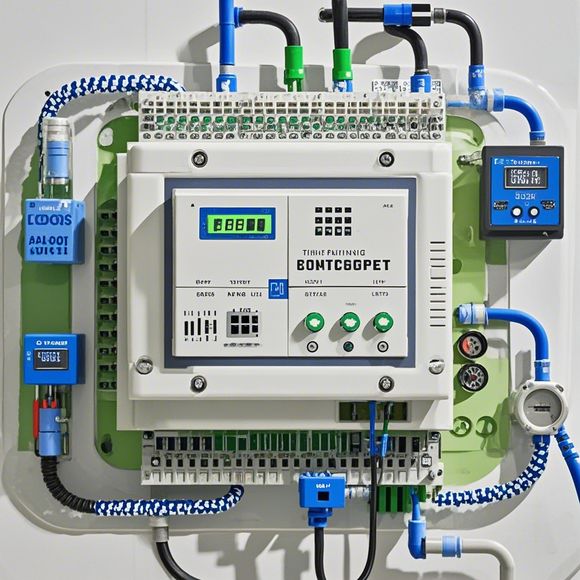PLC in the Fabrication Process: An In-Depth Insight
In the realm of electronics manufacturing, programmable logic controllers (PLCs) have emerged as indispensable tools for automating and controlling complex processes. At the heart of their effectiveness lies a deep understanding of how these devices function within the fabrication process.PLCs are designed to monitor and manage various aspects of manufacturing operations, from raw material feeding to final product inspection. They provide a robust platform for integrating automation with human decision-making, allowing operators to optimize workflow while ensuring consistent quality control standards.The intricate nature of the fabrication process requires precise timing and coordination, which is precisely where PLCs shine. By leveraging sophisticated algorithms and sensor data, PLCs enable seamless integration into existing systems, freeing up valuable time and resources for more critical tasks.As manufacturers continue to push the boundaries of innovation, PLCs remain at the forefront of advanced control technologies. Their ability to adapt and evolve alongside changing industry requirements ensures that they remain a cornerstone of modern manufacturing excellence.In essence, the role of PLCs in fabrication is one of enabling efficiency and precision, enabling companies to produce high-quality products on schedule and within budget. As we continue to explore the limits of technology, PLCs will undoubtedly play an increasingly vital role in shaping future manufacturing landscapes.
Introduction to Programmable Logic Controllers (PLCs) in Manufacturing: The Role of a Master Control System
Hello, everyone! Today, I am thrilled to share my thoughts on one of the most crucial components in manufacturing - Programmable Logic Controllers (PLCs). These marvels of automation technology have revolutionized industries worldwide, allowing for seamless integration of complex processes and systems.

What is a PLC?
Firstly, a PLC stands for Programmable Logic Controller. It's an industrial control computer that's programmed with algorithms that can execute instructions based on inputs from other devices within the system. This means it can sense data from sensors or actuators, process it, and respond accordingly. Essentially, it acts as the brain of your factory floor, making sure everything runs smoothly.
Why Use PLCs in Manufacturing?
The primary reason for using PLCs is efficiency. They can automate repetitive tasks, reducing human error and speeding up production cycles. Additionally, PLCs offer flexibility in programming, allowing for customization according to specific needs. They also reduce maintenance costs and extend the lifespan of your equipment.
Let's delve into some specific benefits of incorporating PLCs into your manufacturing processes:
1、Simplified Programming: With PLCs, you can program them to run a wide range of tasks without the need for intricate software development. This saves time and reduces the chance of errors.

2、Real-Time Data Analysis: PLCs are equipped with powerful processors capable of processing large amounts of data in real time, enabling you to make informed decisions based on accurate readings.
3、Increased Productivity: By automating repetitive tasks, PLCs can free up workers to focus on more complex jobs, leading to increased productivity.
4、Energy Efficiency: Certain PLCs come with features like automatic power saving mode, which helps reduce energy consumption and lower operating costs.
5、Customizable Solutions: Whether you're looking to automate a single part of your process or the entire line, PLCs allow for flexible configurations that meet your specific needs.
6、Compliance and Regulation: Many industries have stringent regulations governing how they must operate. PLCs ensure that your operations comply with local, national, and international standards.
7、Robustness and Durability: Unlike traditional mechanical systems, PLCs are built with high-quality components that can withstand extreme conditions, ensuring longevity and reliability.

8、Remote Access and Control: PLCs often have connectivity options that allow you to monitor and control operations remotely, enhancing security and accessibility.
9、Cost-Effectiveness: Over time, the initial investment in purchasing PLCs can be offset by the savings in labor costs, downtime, and energy expenses.
10、Continuous Learning Capability: Recent advancements in artificial intelligence and machine learning enable PLCs to learn and adapt to changing conditions, improving their performance continually.
In conclusion, PLCs are an essential tool for modern manufacturing operations. By leveraging their advanced capabilities, you can streamline processes, enhance safety, and improve overall efficiency. So, why not consider investing in PLCs today and reap the rewards for years to come?
Content expansion reading:
Articles related to the knowledge points of this article:
PLC Controller Wiring Guideline
PLC Programming for Automation Control in the Manufacturing Industry
Plumbers Rule! The Role of PLC Controllers in the World of Waterworks
The Role of Programmable Logic Controllers (PLCs) in Foreign Trade Operations
PLC Controllers: A Comprehensive Guide to Understanding Their Prices